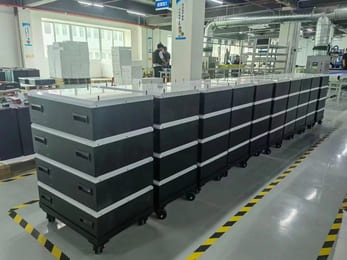Home energy storage batteries have been around for a long time and are now available in a variety of types and sizes. Due to the rapid enhancement of lithium innovation, today’s lithium battery frameworks immediately replace traditional lead corrosion batteries as producers create savvy, measurable frameworks to suit different energy storage applications.
Battery Estimation
Most of the time is spent estimating the battery, which can result in poor performance and not match the buyer’s assumptions. This is usually due to two main reasons:
Moderate battery – needs more power to meet the needs of the family.
Larger than average batteries – Sun-based clusters don’t have enough power to regularly charge batteries during cold weather months.
To avoid these issues, batteries should be selected and measured by a certified manufacturer based on a variety of important elements, including: sunlight-based exhibit size (existing or new), frame type (on grid or off-matrix), boost power Prerequisites, especially nighttime or short-term energy utilization (kWh). Fortunately, most current battery frameworks are measurable and adaptive, so can be estimated similarly.
Battery Limit – kWh
Battery size or limit is estimated in kWh (kilowatt hour). This is the total energy the battery can store. In any case, the available limit may differ from the full battery limit. Overall, the usable limit is limited to 80% to 90% of the full battery capacity to establish life expectancy and avoid potential battery shutdown situations at very low charge levels. For example, a lithium battery fully limited to 10 kWh might have its usable limit limited to 80% to increase life expectancy. Therefore, 8 kWh of energy can be released continuously. Still, the remaining 10 to 20 percent can often be used in a crisis, such as a long-term outage that depends on how the framework is modified.
Battery Life
The home energy storage battery framework has only been widely used for about eight years, so there is still insufficient information on provable enforcement and corruption. Nonetheless, we have gathered such a long information through testing and examining the best solar cells for different (lithium) households that we have come up with a life expectancy of 8 to 15+ years. The existence of a battery is not entirely dependent on the number of charge and discharge cycles, or all of our energy throughput (kWh).
Shenzhen Pkeneng Energy Co., Ltd. focuses on R&D, production and sales in the field of new energy.
Post time: Oct-09-2021

